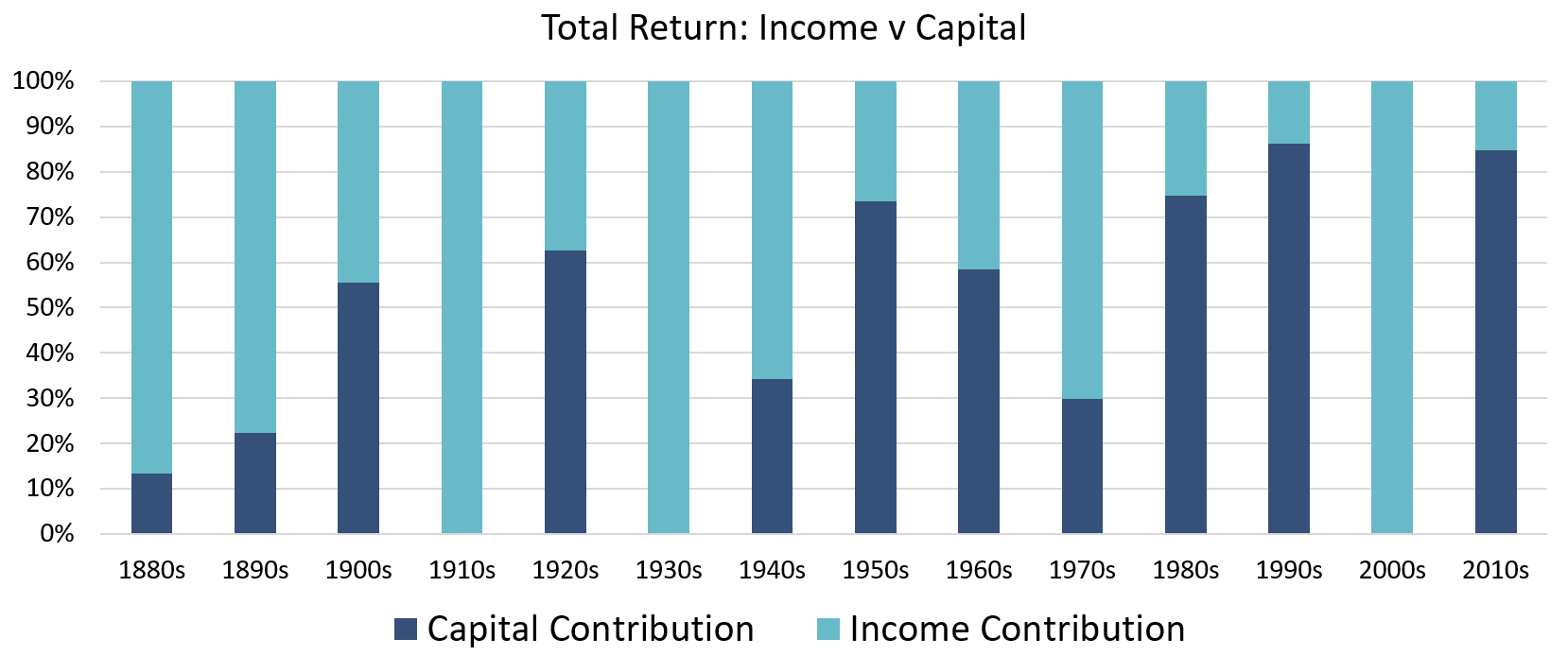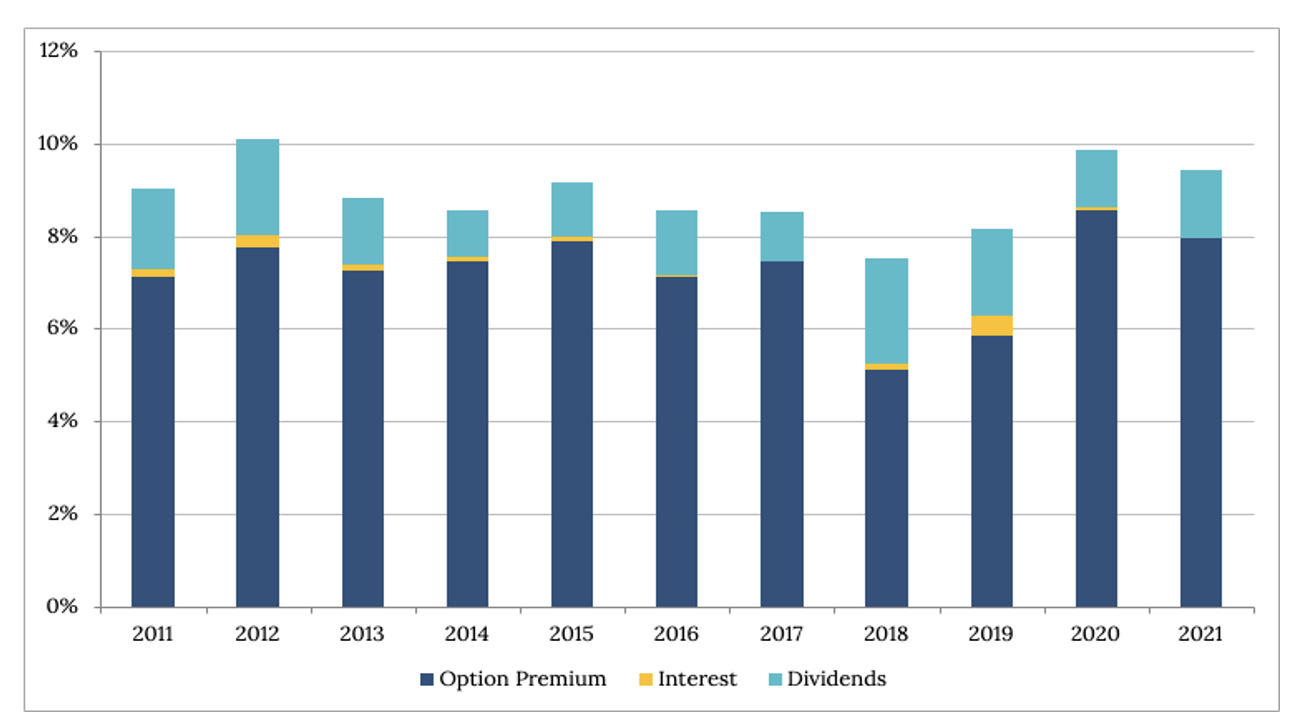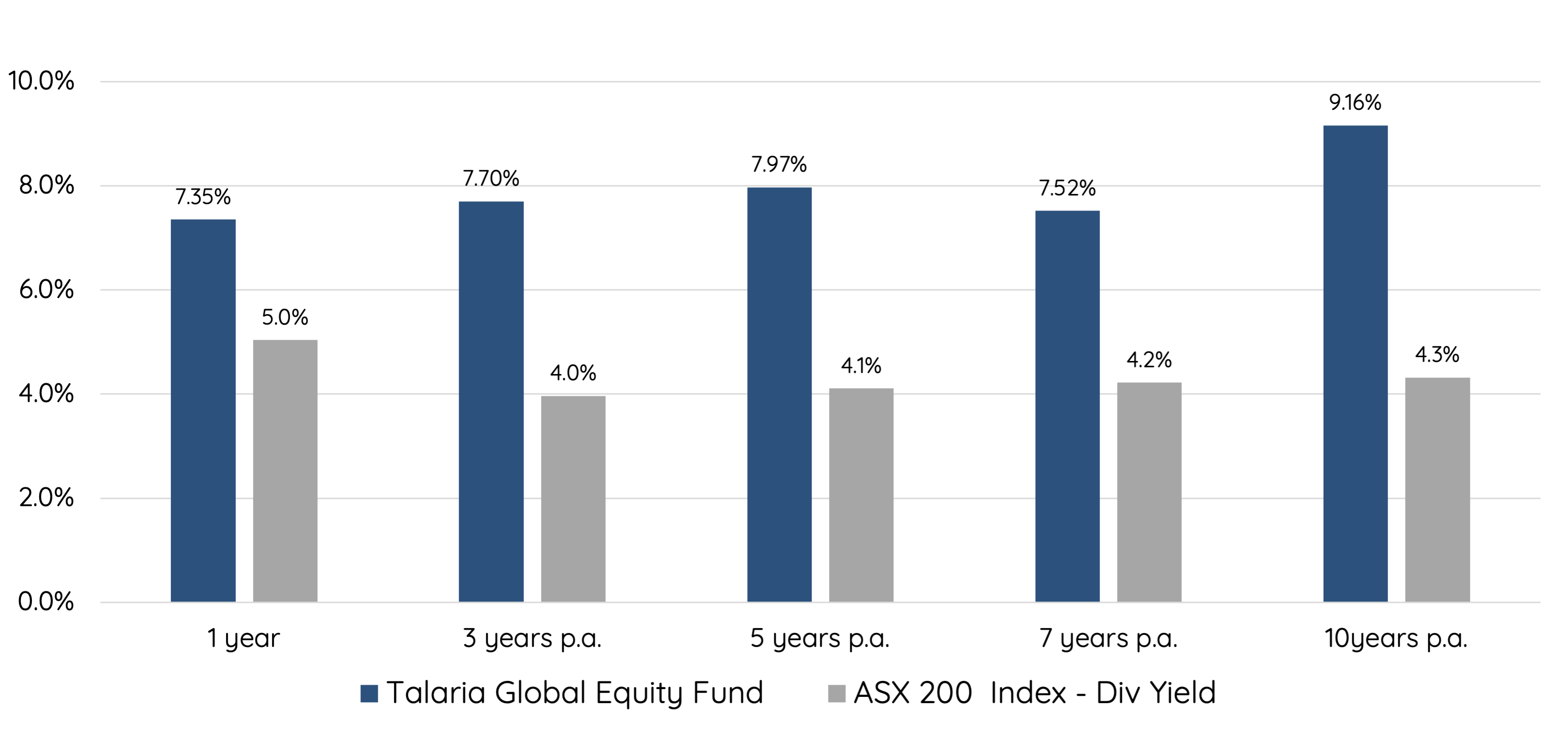This is how you escape Australia's dividend trap
In Australia, income investing is too often thought of as fully-franked dividend investing.
That narrow lens can easily lead to a dividend trap – where investors get lured in by high yields at the cost of total return.
To maximise your total return, your sources of income need to be diversified. But how exactly does one go about achieving that?
In this wire, Hugh Selby-Smith, Co-Chief Investment Officer of the Talaria Global Equity Fund, explains the outlook for income investing, the problems associated with relying on dividend yield as an income strategy, and how Talaria’s Global Equity Strategy generates consistent and diversified income.

Passing the baton
Historically, the makeup of total return see-saws between capital growth and income.
“During the last decade, far and away the largest component of return was the growth component. This contributed around 85% in terms of the total return versus about just 15% from income,” says Selby-Smith.

“That was very similar to what we saw in the 1990s, where you saw a very strong component of the total return coming from growth, and yet the following decade more than 100% of the return came from the income component.”
If the past decade is anything to go by, income is about to have its turn in the sun.
“The long-term return is always governed by starting valuations, and if you look at the Shiller P/E, you’re still up around the 90thpercentile of S&P 500 valuations historically. To put it another way, the broad US index has only been more expensive for about a total of 5% of the time.”
“At the very least, the income component of total return is going to be much more balanced than it has been the prior decade.”
Crucially, even when the income contribution to total return is down, it’s never negative. The same can’t be said of the growth component.
“Through the 2000s, it took 10 years to get your money back in total after the dot-com bubble burst. So investors had to rely entirely on the income component.”
Is dividend yield alone a misguided an income strategy?
To be clear, income as a factor, and yield as a component of total return, is fairly volatile. And dividends get caught up in that.
“When markets draw down, historically [income] tends to have a greater leverage to that drawdown than other factors,” says Selby-Smith.
“When people are least comfortable about the outlook for the capital component of total return, dividends are cut. And that’s not that companies are unable to pay dividends, it’s that management – given the great level of uncertainty around market falls – makes the prudent decision to preserve cash until they have greater certainty about the needs of the business.”
Companies that maintain their dividend often do so at the cost of total return. The banks are a good case in point.
“They pay fairly consistent high dividends, but a lot of the time they’ve been issuing stock to pay for it,” says Selby-Smith.
“That’s not really a dividend. It’s like an income strategy that sells down your capital to pay your dividend. If we’re talking about total return, I can pay you a 6% dividend but if that’s done by paying 7% of assets – that’s not a great outcome.”
Over-reliance on dividends drives investors down the path of unwitting sector bias – in Australia, banks, resources and retail.
“But more generally it can also drive you into specific portfolio outcomes in terms of region and sector, which can mitigate the benefits of diversification.”
Diversification is key
Like a lot of funds, Talaria has a bottom-up process looking for mispriced securities on behalf of its investors.
Its point of difference, though, is how and from where it gains these exposures.

Every stock the firm has ever owned has started life as a put option, which provides an added source of income and helps reduce volatility.
A put option is essentially a promise to buy a stock in the future. In return for making a commitment to buy a share they want to own, they are able to generate income in the form of an option premium. Simply the price the buyer pays Talaria for the option.
If the stock goes up, Talaria still book the premium as income. If the stock goes down and the buyer of the option exercises their right to sell the shares to Talaria at the agreed “strike price”, then Talaria gets the stock at the strike price minus the premium paid for the contract.
“We do this to lower risk, lower volatility and give us a greater certainty of outcome. So over the life of the fund, this is around 7-7.25% per annum - differentiated income that is independent of any company’s desire or ability to pay a dividend.”
It is also an additional source of return and explains the high level of income compared to the ASX.

As well as diversifying the type of income, Talaria also diversify geographically, to reduce home bias and achieve outsized total return.
"We have about 30% exposure to the US, 5% in Hong Kong, 10% in Switzerland, mid-teens in Europe ex United Kingdom, and roughly 18% in Japan."
A little certainty can be empowering, especially in volatile times
For more than 16 years Talaria has been delivering a greater certainty of returns through its unique and alternative approach to global equity investing, with over 9% p.a. average income distribution for the last 10 years, low volatility and lower market risk.
3 topics
1 fund mentioned


